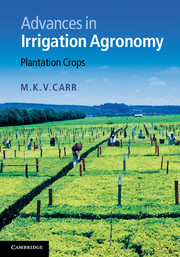7 - Rubber
Published online by Cambridge University Press: 05 May 2012
Summary
Introduction
The rubber tree of commerce (Hevea brasiliensis Muell. Arg.) is indigenous to the Amazon rainforest, within 5° N and 5° S latitude of the equator. Its properties were well known to the Indians of South and Central America long before the arrival of the Europeans in the sixteenth century. It is cultivated for its latex, which is used in the production of natural rubber, 60% of which is utilised in the manufacture of tyres (Figure 7.1). Latex is a cellular fluid consisting of a suspension of rubber hydrocarbon particles, represented by the formula (C5H8)n, in an aqueous medium. The nineteenth century saw the vulcanisation of rubber (heating with sulphur allows rubber to retain its physical properties unchanged over the temperature range 0–100 °C), the development of specialist machinery and techniques for manufacturing rubber goods, the rise of commercial trade in rubber, and the first efforts to cultivate rubber when the demand for raw rubber began to exceed the supply from wild trees in Brazil (Varghese and Abraham, 2005). In 1876 seeds were gathered from the rainforest and taken to Kew Gardens in London. Subsequently, seedlings were sent from London to Sri Lanka and afterwards onward to Singapore where they formed the basis of the rubber-producing industry that developed throughout the twentieth century, particularly in South-east Asia (Purseglove, 1968).
The total annual production of natural rubber in 2008 was about 10.6 million t from 8.9 million ha. The principal producers are Thailand (3.0 million t, 1.8 million ha), Indonesia (2.8 million t, 2.9 million ha), Malaysia (1.2 million t, 1.25 million ha), India (0.82 million t, 0.45 million ha) and Vietnam (0.61 million t, 0.63 million ha). The largest producer in West Africa is the Côte d'Ivoire (0.18 million t), and in South America it is Brazil (0.11 million t). In 2008, South-east Asia produced 94% of the world's crop (FAO, 2010b; IRSG, 2010).
- Type
- Chapter
- Information
- Advances in Irrigation AgronomyPlantation Crops, pp. 169 - 186Publisher: Cambridge University PressPrint publication year: 2012

